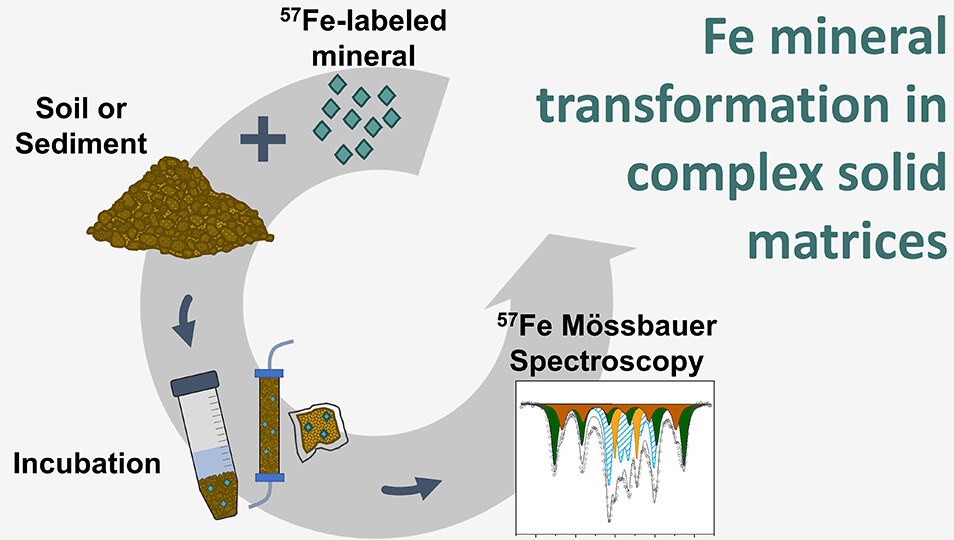A New Approach for Investigating Iron Mineral Transformations in Soils and Sediments
A key aspect of the ERC 'IRMIDYN' project is the development of techniques to study Fe mineral transformations in soils and sediments using isotopically labeled Fe minerals and 57Fe Mössbauer spectroscopy. The approach is explained in a new publication in Environmental Science & Technology, titled 'A New Approach for Investigating Iron Mineral Transformations in Soils and Sediments Using 57Fe-Labeled Minerals and 57Fe Mössbauer Spectroscopy'.

Iron minerals in soils and sediments play important roles in many biogeochemical processes and therefore influence the cycling of major and trace elements and the fate of pollutants in the environment. However, the kinetics and pathways of Fe mineral recrystallization and transformation processes under environmentally relevant conditions are still elusive. Here, we present a novel approach enabling us to follow the transformations of Fe minerals added to soils or sediments in close spatial association with complex solid matrices including other minerals, organic matter, and microorganisms. Minerals enriched with the stable isotope 57Fe are mixed with soil or sediment, and changes in Fe speciation are subsequently studied by 57Fe Mössbauer spectroscopy, which exclusively detects 57Fe. In this study, 57Fe-labeled ferrihydrite was synthesized, mixed with four soils differing in chemical and physical properties, and incubated for 12+ weeks under anoxic conditions. Our results reveal that the formation of crystalline Fe(III) (oxyhydr)oxides such as lepidocrocite and goethite was strongly suppressed, and instead formation of a green rust-like phase was observed in all soils. These results contrast those from Fe(II)-catalyzed ferrihydrite transformation experiments, where formation of lepidocrocite, goethite, and/or magnetite often occurs. The presented approach allows control over the composition and crystallinity of the initial Fe mineral, and it can be easily adapted to other experimental setups or Fe minerals. It thus offers great potential for future investigations of Fe mineral transformations in situ under environmentally relevant conditions, in both the laboratory and the field.
Notini, L., Schulz, K., Kubeneck, L. J., Grigg, A. R. C., Rothwell, K. A., Fantappiè, G., ThomasArrigo, L. K., and Kretzschmar, R. (2023) A new approach for investigating iron mineral transformations in soils and sediments using 57Fe-labeled minerals and 57Fe Mössbauer spectroscopy. Environ. Sci. Technol.
The fexternal page ull text is available online (open access).